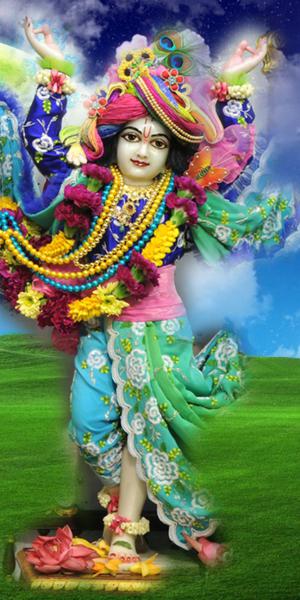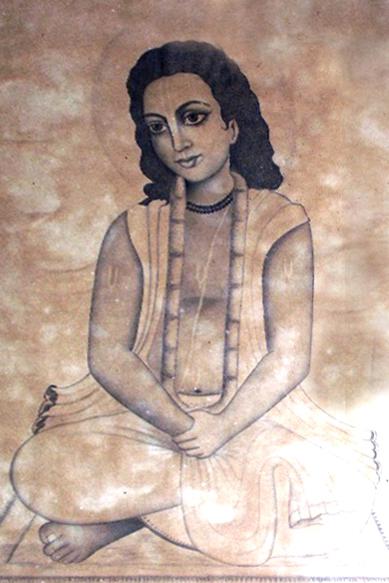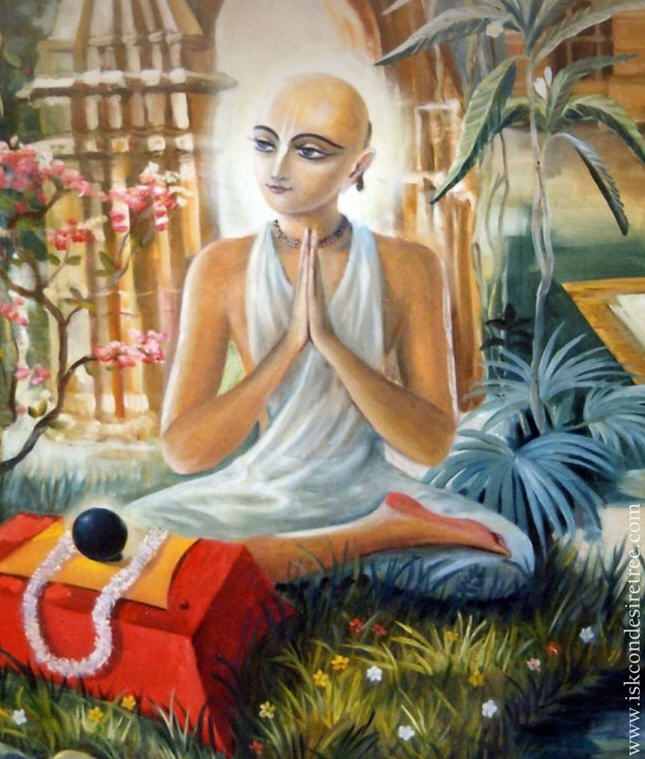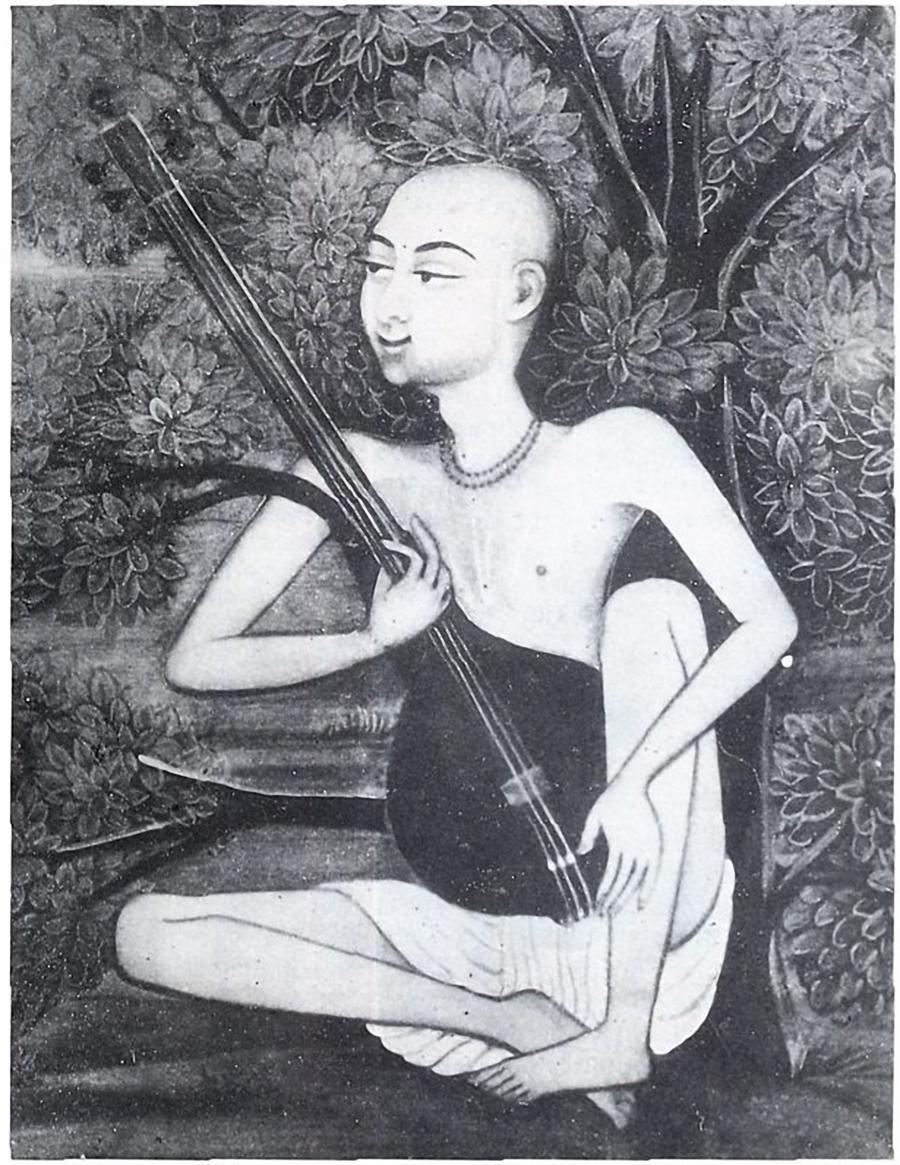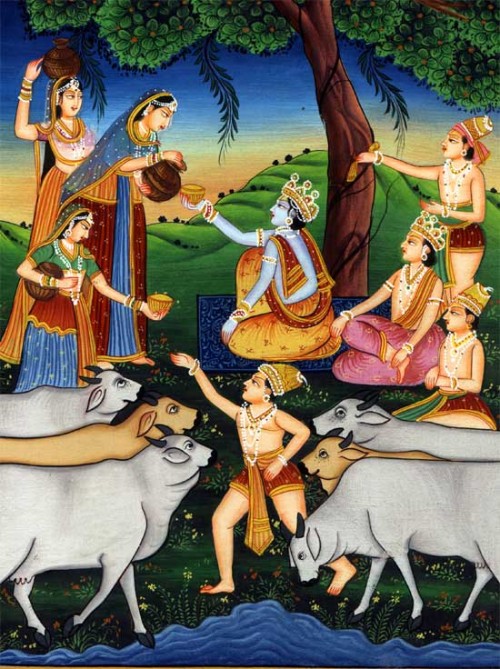Every living being, out of many, many billions and trillions of living beings, has a particular relationship with the Lord eternally
"…Bhagavad-gītā is best understood by a person who has qualities similar to Arjuna's.
That is to say he must be a devotee in a direct relationship with the Lord.
As soon as one becomes a devotee of the Lord, he also has a direct relationship with the Lord.
That is a very elaborate subject matter, but briefly it can be stated that a devotee is in a relationship with the Supreme Personality of Godhead in one of five different ways:
1. One may be a devotee in a passive state;
2. One may be a devotee in an active state;
3. One may be a devotee as a friend;
4. One may be a devotee as a parent;
5. One may be a devotee as a conjugal lover.
Arjuna was in a relationship with the Lord as friend.
Of course there is a gulf of difference between this friendship and the friendship found in the material world.
This is transcendental friendship



